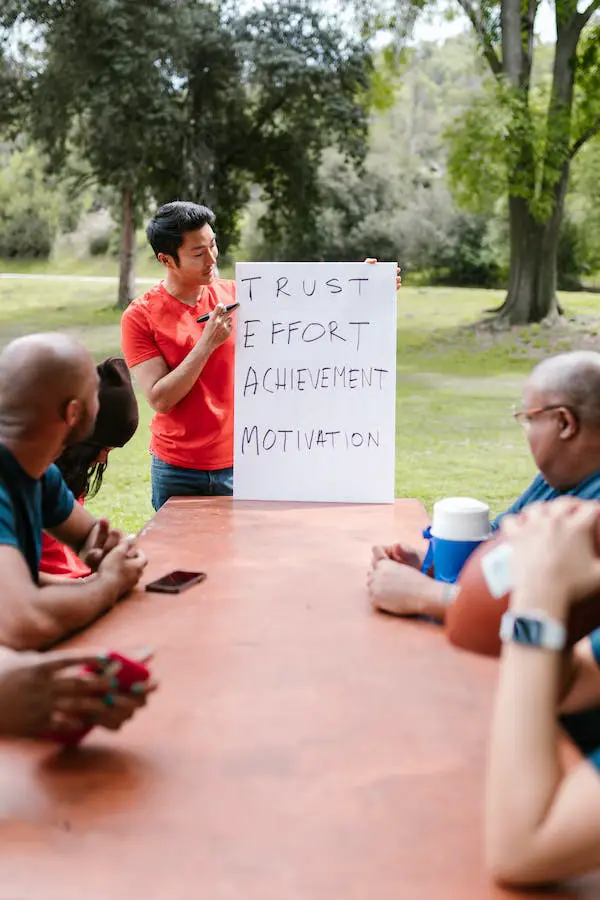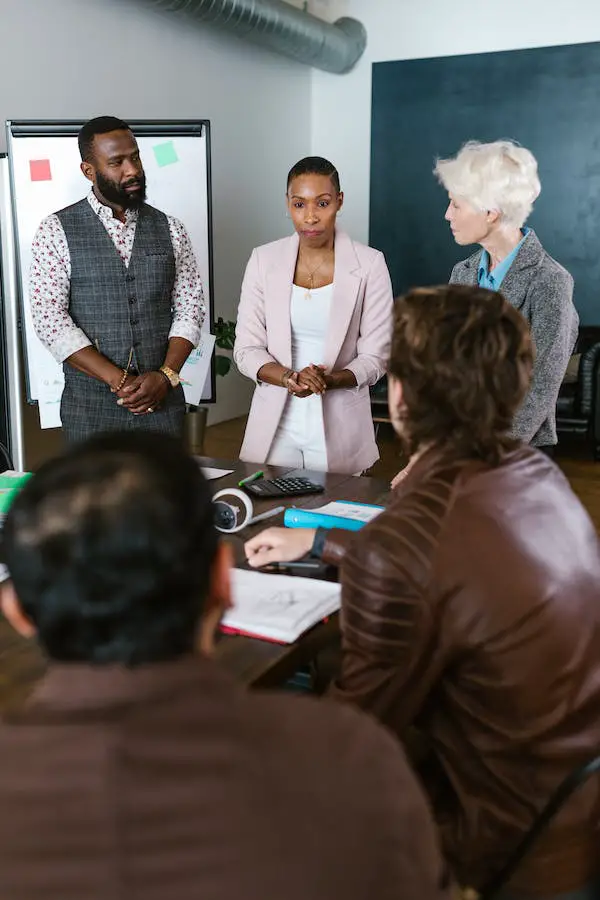
Leadership development is crucial for the success of any organization.
In this article, we will explore various activities that can help individuals and teams enhance their leadership skills.
From individual exercises to group-based initiatives, these activities are designed to foster effective communication, decision-making, and problem-solving.
What are leadership activities?
Leadership activities are purposeful exercises and games crafted to cultivate and elevate leadership skills.
These activities target the refinement of crucial competencies like active listening, effective communication, and adept team management.
They offer a hands-on opportunity for individuals to grasp and implement leadership principles in a controlled setting.

Leadership-building activities
Individual activities
Individual leadership activities are exercises that focus on personal skill development.
These activities are designed to help individuals identify their strengths and areas for improvement.
Here are some examples of individual leadership activities:
Self-assessment exercises
Self-assessment exercises are invaluable tools designed to assist individuals in recognizing their strengths and weaknesses.
Typically delivered in the form of questionnaires or assessments, these activities evaluate various aspects of an individual’s leadership repertoire, including style, communication skills, decision-making abilities, and problem-solving skills.
Goal setting
Goal setting, a fundamental leadership activity, involves establishing objectives that adhere to the SMART criteria: specific, measurable, achievable, relevant, and time-bound.
This structured approach aids individuals in concentrating on their priorities and devising a clear plan to attain their goals.
By setting specific benchmarks and timelines, individuals enhance their focus, productivity, and overall effectiveness in leadership roles.
Journaling
Journaling is a reflective activity where individuals chronicle their thoughts, ideas, and experiences related to leadership.
This practice serves as a personal repository for insights into leadership styles, areas for improvement, and a means to track progress over time.
Journaling promotes self-awareness, helping individuals refine their leadership approach and adapt to evolving challenges.
Role-playing
Role-playing is an interactive leadership activity that involves simulated scenarios where individuals act out various roles and responsibilities.
This hands-on approach allows individuals to practice communication, decision-making, and problem-solving skills in a controlled environment.
Through role-playing, individuals build confidence, refine their abilities to navigate complex situations, and develop a robust skill set that translates into real-world leadership scenarios.
Mentoring
Mentoring is a collaborative activity where individuals seek guidance and advice from a more experienced leader.
This form of experiential learning provides a platform for knowledge transfer, enabling individuals to glean insights from the experiences of seasoned leaders.
Through mentorship, individuals can refine their leadership strategies, gain a deeper understanding of effective practices, and navigate their professional journey with enhanced confidence and competence.

Group activities
Here are some examples of group leadership activities:
Survival leadership activities
This activity serves as a dynamic simulation of survival scenarios, demanding group decision-making, problem-solving, and effective communication to overcome challenges.
These engaging activities provide a practical platform for teams to develop and refine their leadership skills in a context that mirrors real-world challenges.
All Aboard
This activity is an interactive exercise where a group is presented with the task of fitting all team members onto a small platform or within a confined space.
This scenario necessitates collaborative efforts and effective leadership to successfully navigate spatial constraints.
Participants learn the value of teamwork, coordination, and strategic thinking as they work together to overcome the physical challenge presented by limited space.
Minefield
This activity is designed to emphasize trust, communication, and leadership.
It involves creating a simulated minefield with objects on the ground, while one team member is blindfolded and relies on guidance from the rest of the team to navigate through the obstacles.
This exercise underscores the importance of clear communication, trust-building, and the role of leadership in guiding individuals through challenges.
Leaders you admire
This activity takes a different approach by encouraging group members to engage in discussions about the leadership qualities exhibited by individuals they admire.
This activity fosters a deeper understanding of effective leadership traits and behaviors.
By sharing perspectives on admired leaders, participants gain insights into diverse leadership styles and qualities, contributing to a collective appreciation of what constitutes effective leadership.
Leadership envelopes
This activity is a hands-on activity that aids groups in translating abstract leadership principles into practical, on-the-job behaviors.
Participants collaborate in groups to generate real-life applications of different leadership principles.
This exercise bridges the gap between theoretical knowledge and its practical application, promoting a holistic understanding of how leadership principles manifest in everyday work scenarios.
Human icebreaker
This activity is centered around the concept of teamwork and communication.
Group members work collectively to “unfreeze” a human “iceberg,” highlighting the importance of collaboration and leadership in achieving a common goal.
This exercise emphasizes the significance of coordinated efforts and effective leadership in breaking down barriers and overcoming challenges.

How to measure the effectiveness of leadership activities
Measuring the effectiveness of leadership activities is essential for assessing their impact on individuals and organizations.
Several methods and metrics can be used to measure leadership effectiveness, including:
Employee productivity
One key metric for evaluating leadership effectiveness is employee productivity.
Leaders who consistently contribute to the improvement of employee productivity tend to be more effective in their roles.
Factors influencing productivity include motivation, the work environment, job satisfaction, and the prevailing company culture.
Employee engagement
Employee engagement serves as a pivotal indicator of leadership effectiveness.
This can be evaluated through surveys, interviews, or direct observation.
A leader who effectively engages their team is more likely to create a positive work environment, fostering higher levels of employee satisfaction and, in turn, increased productivity.
Team performance
Measuring team performance is another effective way to evaluate the success of leadership activities.
Metrics such as sales, revenue, customer satisfaction, innovation, or operational efficiency offer tangible benchmarks.
Improvement in these areas signifies the positive impact of leadership development on the team’s overall effectiveness.
Workforce attitudes
Assessing workforce attitudes is a qualitative approach to understanding the effectiveness of leadership.
When employees exhibit enthusiasm about coming to work and demonstrate a commitment to giving their best effort, it serves as a strong indicator of effective leadership.
Behavior change
Measuring behavior change, particularly among managers and their direct reports, offers valuable insights into the impact of leadership development programs.
Surveys or interviews can be used to assess changes in leadership behavior, communication styles, and decision-making processes.
Company’s profitability
The impact of leadership activities on the company’s profitability serves as a tangible measure of their effectiveness.
Effective leadership should contribute to the achievement of strategic objectives and positively influence the overall financial performance of the organization.

Conclusion
The development of robust and effective leaders is significantly influenced by engaging in diverse individual and group-based leadership activities.
Through participation in a range of exercises, individuals can augment their leadership skills, making valuable contributions to the overall success of their teams and organizations.
Recognizing the pivotal role of these activities, organizations are encouraged to invest in them to cultivate a pipeline of capable and competent leaders.



